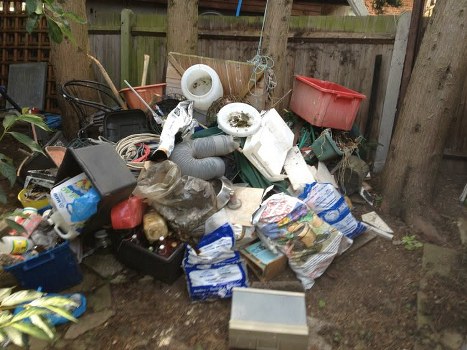Garden Clearance in Temple
Understanding the Importance of Garden Clearance in Temple Settings

The serene ambiance of a temple is often complemented by well-maintained gardens that provide a peaceful environment for worshippers and visitors alike. Garden clearance in temple areas is essential to preserve this tranquility, ensuring that the space remains inviting and spiritually uplifting.
Over time, gardens can become overgrown with weeds, fallen leaves, and debris, which not only detracts from the aesthetic appeal but can also become a safety hazard. Regular clearance helps in maintaining the structural integrity of garden paths, seating areas, and sacred spaces.
Moreover, a clean garden reflects the temple's commitment to environmental stewardship, emphasizing the importance of caring for nature as a spiritual duty.
Planning a Successful Garden Clearance

Effective garden clearance requires meticulous planning to ensure that all aspects of the garden are addressed without disrupting daily temple activities. Strategic planning involves assessing the current state of the garden, identifying problem areas, and scheduling clearance activities during periods of low activity to minimize inconvenience.
Additionally, collaborating with temple authorities to outline specific requirements and priorities can lead to a more organized and efficient clearance process. This includes deciding on the areas that need immediate attention and setting realistic timelines for the project.
Utilizing a checklist can help in tracking progress and ensuring that no section of the garden is overlooked during the clearance.
Sustainable Practices in Garden Clearance

Adopting sustainable practices in garden clearance not only benefits the environment but also aligns with the temple's spiritual values. This includes recycling garden waste, composting organic material, and using eco-friendly tools and methods to minimize the ecological footprint.
Implementing rainwater harvesting systems and choosing native plants can further enhance the garden's sustainability, promoting biodiversity and reducing the need for excessive maintenance.
By prioritizing sustainability, temples can serve as role models for the community, demonstrating a commitment to environmental conservation and responsible stewardship of natural resources.
Tools and Equipment for Efficient Clearing

Having the right tools and equipment is crucial for the efficiency and effectiveness of garden clearance. Essential tools include pruning shears, lawn mowers, hedge trimmers, and wheelbarrows. Investing in high-quality equipment can significantly reduce the time and effort required for clearance tasks.
Additionally, safety gear such as gloves, goggles, and protective clothing should be provided to all individuals involved in the clearance process to prevent injuries and ensure a smooth operation.
For larger temple gardens, machinery like skid steer loaders or compact tractors may be necessary to handle extensive clearance tasks, especially in areas with dense vegetation or difficult terrain.
Hiring Professional Garden Clearance Services

While some temples may have the necessary resources and volunteer support for garden clearance, hiring professional services can offer numerous advantages. Professional garden clearance teams bring expertise, experience, and specialized equipment that can enhance the quality and speed of the clearance process.
Moreover, professionals can provide valuable insights into garden maintenance, plant care, and sustainable practices, ensuring that the garden remains in optimal condition long after the initial clearance.
When selecting a professional service, it's important to consider their reputation, previous work, and alignment with the temple's values and requirements to ensure a harmonious collaboration.
Cost Considerations for Garden Clearance

Budgeting for garden clearance in temple involves accounting for various factors including labor costs, equipment rental or purchase, disposal fees for garden waste, and any additional services such as landscaping or plant replacement.
Temple administrations should seek multiple quotes from different service providers to compare costs and services offered. Additionally, exploring funding options, such as community donations or grants focused on environmental or religious institutions, can help offset expenses.
Transparency in budgeting and clear communication with stakeholders about the financial aspects of garden clearance can ensure that projects remain within budget and are executed smoothly.
Seasonal Considerations for Temple Garden Maintenance

Gardens are subject to seasonal changes that can significantly impact the clearance process. Understanding these seasonal dynamics is essential for effective maintenance and clearance.
In spring and autumn, temples may experience increased vegetation growth, necessitating more frequent trimming and weeding. Conversely, during winter, efforts may focus on removing fallen leaves and preparing the garden for the dormant season.
Planning clearance activities in accordance with seasonal variations helps in maintaining the garden's health, preventing overgrowth, and ensuring that it remains a welcoming space throughout the year.
Common Challenges and Solutions in Garden Clearance

Garden clearance in temple settings often presents unique challenges, such as dealing with sacred plants, managing limited space, or coordinating with ongoing temple activities. Addressing these challenges requires thoughtful strategies and flexibility.
One common issue is balancing the need for clearance with the preservation of spiritually significant flora. In such cases, working closely with horticulturists or spiritual leaders can help in identifying which plants can be pruned or removed without compromising their sacredness.
Space constraints may necessitate creative solutions, such as vertical gardening or maximizing existing areas to maintain functionality and beauty without overwhelming the available space.
Benefits of Regular Garden Clearance

Regular garden clearance offers numerous benefits, both tangible and intangible. A well-maintained garden enhances the overall appearance of the temple, creating a serene and inviting environment for worship and reflection.
From a practical standpoint, regular clearance prevents the accumulation of debris, reducing the risk of pest infestations and plant diseases. This proactive approach ensures the longevity and health of the garden's flora.
Additionally, a clean and orderly garden can positively influence the spiritual well-being of temple visitors, fostering a sense of peace, harmony, and connection with nature.
Integrating Technology in Garden Clearance

Advancements in technology have revolutionized garden clearance practices, offering innovative solutions that enhance efficiency and precision. Tools such as robotic mowers, automated irrigation systems, and garden management software can streamline maintenance tasks and provide real-time monitoring of plant health and soil conditions.
Implementing such technologies in temple gardens can reduce the manual labor required, allowing caretakers to focus on more specialized tasks. Moreover, data-driven insights can inform better decision-making, leading to more sustainable and effective garden management strategies.
Embracing technology not only modernizes garden clearance practices but also demonstrates the temple's commitment to innovation and environmental responsibility.
Volunteer Engagement in Garden Clearance

Engaging the temple community through volunteer initiatives can significantly enhance garden clearance efforts. Volunteers bring enthusiasm, labor, and a personal connection to the temple, making their involvement invaluable.
Organizing regular volunteer days, providing training, and recognizing contributions can foster a sense of ownership and responsibility among community members. This collaborative approach not only eases the burden of maintenance but also strengthens community bonds.
Additionally, involving volunteers in the planning and execution of garden clearance promotes inclusivity and ensures that the garden remains a collective space cherished by all.
Long-Term Maintenance Strategies

Developing long-term maintenance strategies is essential to sustain the benefits of garden clearance over time. This includes establishing routine schedules for weeding, pruning, and litter removal, as well as seasonal planting and landscaping.
Implementing integrated pest management practices can further enhance garden health, reducing the reliance on chemical treatments and promoting ecological balance.
By adopting a comprehensive maintenance plan, temples can ensure that their gardens continue to thrive, providing a lasting sanctuary for worshippers and enhancing the overall spiritual environment.
Conclusion

Effective garden clearance in temple settings is a multifaceted endeavor that encompasses planning, sustainability, proper tool usage, and community engagement. By prioritizing these elements, temples can maintain beautiful and harmonious gardens that enrich the spiritual experience for all visitors.
Regular maintenance not only preserves the aesthetic and structural integrity of the garden but also fosters a deeper connection with nature and the divine.
Embrace professional services, sustainable practices, and community involvement to ensure that your temple garden remains a beacon of peace and tranquility for years to come.
Contact us today to learn more about our garden clearance services and how we can help maintain the sanctity and beauty of your temple's outdoor spaces.